Upper Mustang Trek in June – As the scorching summer heat begins to envelope much of the world in its unforgiving embrace, there exists a place where the cool mountain breeze still whispers tales of adventure and excitement. That place is the Upper Mustang region of Nepal, a hidden gem nestled in the heart of the Himalayas. And June, with its clear skies and blooming rhododendrons, is the perfect time to embark on the trek of a lifetime through this mystical land.
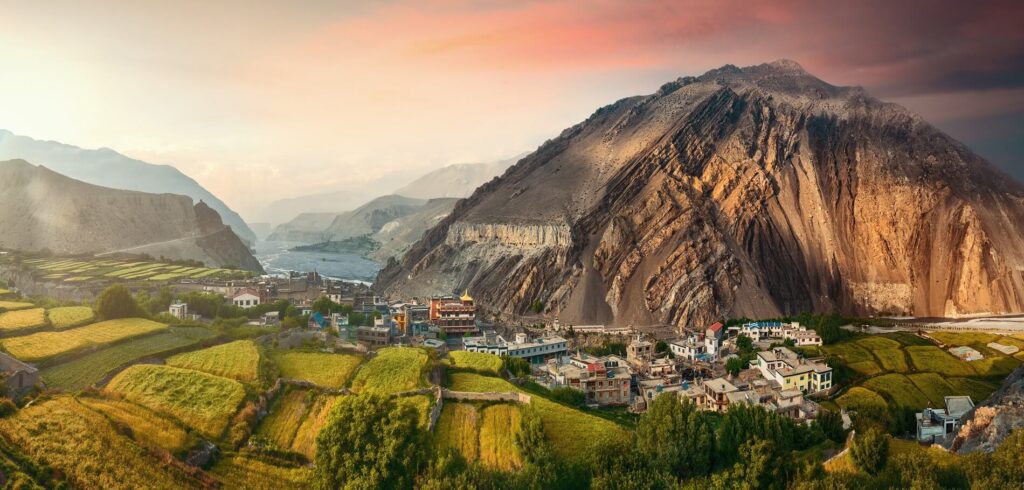
As you set foot on the ancient trails that wind their way through towering cliffs and rugged terrain, you’ll feel your heart race with anticipation at the thought of what lies ahead. Furthermore, the air is crisp and pure, filled with the fragrant scent of juniper and pine, and the sound of rushing streams echoes through the valley.
With each step, you’ll uncover the secrets of a land that time seems to have forgotten. In addition to the ancient monasteries and chortens that dot the landscape, you’ll be filled with wonder and amazement with every moment of your journey as you gaze upon the stunning vistas of the Annapurna and Dhaulagiri ranges
So pack your bags, don your hiking boots, and get ready to embark on an unforgettable journey through one of the world’s most stunning and mysterious regions. The Upper Mustang trek in June awaits, and the adventure of a lifetime is just a few steps away.
Temperature and Weather Conditions
June is one of the best months to visit Upper Mustang, as the region experiences pleasant weather conditions during this time of the year. However, don’t let the mild temperature fool you – Upper Mustang is still a rugged and challenging terrain with a climate that can be as unforgiving as it is unpredictable.
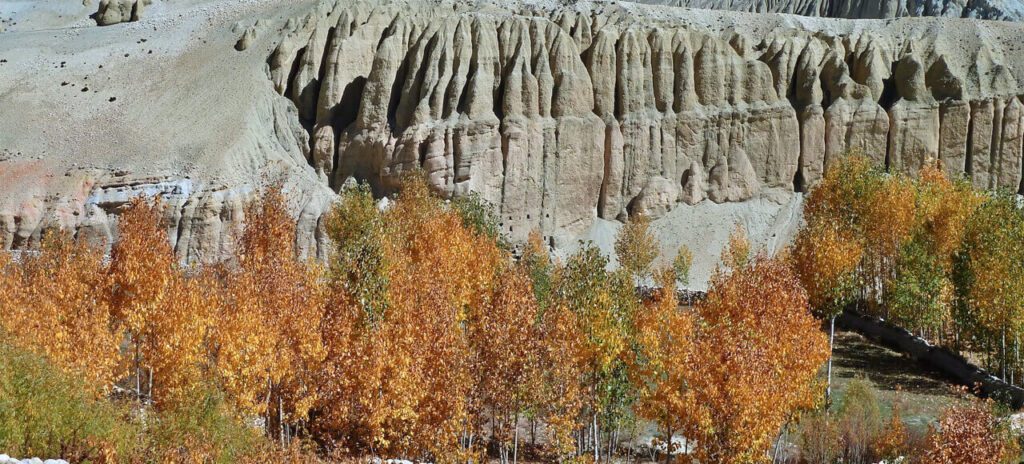
While the days are generally warm and sunny, with temperatures averaging between 16-22°C, the nights can be chilly and frigid, with temperatures dropping below freezing. The Upper Mustang region lies in a rain shadow area, which means that it receives very little rainfall, making it one of the driest regions in Nepal. However, there is still a possibility of occasional rain showers, so it’s always best to be prepared with rain gear to avoid getting caught in the rain.
Another interesting fact about the weather conditions in Upper Mustang in June is the wind. The region is known for its strong winds which can sometimes gust up to 100km/h (62 mph) or more. These winds can make trekking difficult, especially when crossing high mountain passes, so it’s important to be aware of the weather forecast and plan accordingly.
Kathmandu to the Upper Mustang
There are several exciting routes to get to Upper Mustang from Kathmandu, depending on your preferences and time constraints. Here are some of the most popular options:
Kathmandu to Pokhara by flight, then drive to Jomsom, and trek to Upper Mustang:
This route involves a flight from Kathmandu to Pokhara, followed by a scenic drive to Jomsom. From Jomsom, you can trek to Upper Mustang via the Kali Gandaki Valley, as mentioned above.
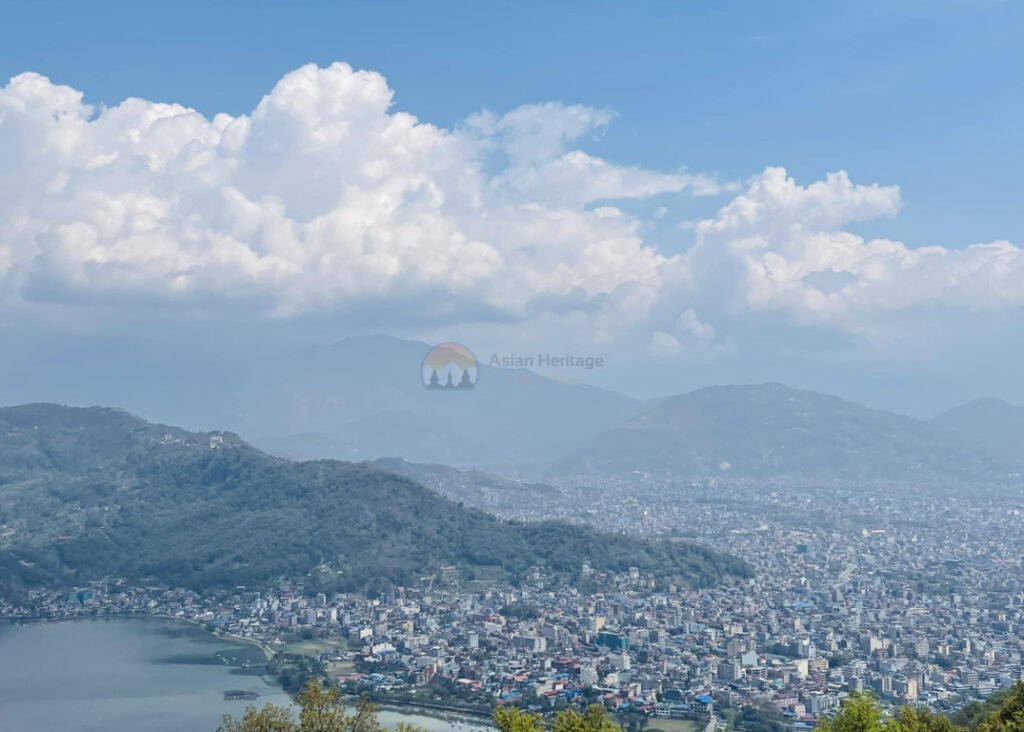
The drive from Pokhara to Jomsom is incredibly scenic, and you will pass through picturesque villages and stunning landscapes.
Kathmandu to Beni by bus, then trek to Upper Mustang:
If you are looking for a more budget-friendly option, you can take a bus from Kathmandu to Beni, which takes around 9-10 hours.

From Beni, you can trek to Upper Mustang via the Kali Gandaki Valley which takes around 12-14 days. This route is less frequented by tourists and allows you to experience the local way of life in the rural villages along the way.
Kathmandu to Upper Mustang by helicopter:
For those who want to skip trekking and enjoy a luxurious experience, a helicopter ride from Kathmandu to Upper Mustang is the way to go. The helicopter ride takes around 2-3 hours and offers stunning aerial views of the Himalayan mountains and the Mustang region.
Private Jeep:
A private jeep is also an option for traveling to Upper Mustang from Kathmandu. This is a great option for those who want a more comfortable and flexible journey, as well as those who have limited time but still want to experience the beauty of the Mustang region. The route by private jeep involves driving from Kathmandu to Pokhara which takes around 6-7 hours.
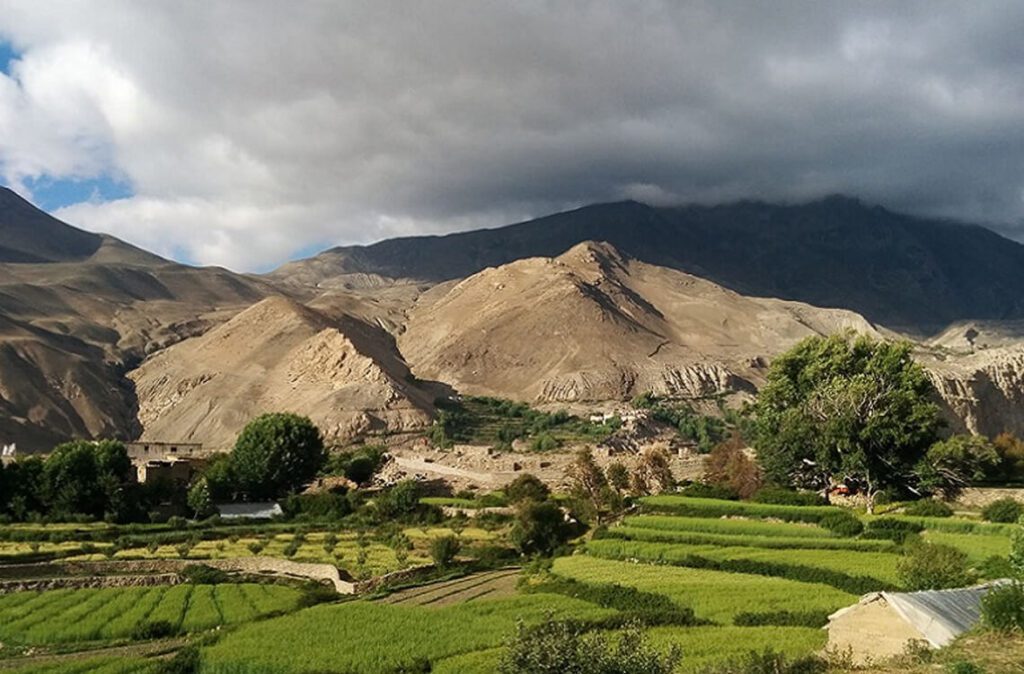
From Pokhara, you will drive to Jomsom via the scenic Beni-Jomsom road which takes around 7-8 hours. From Jomsom, you can trek to Upper Mustang or take a jeep directly to your destination, depending on your preferences.
Highlights of the Upper Mustang Trek in June
June is one of the best months to undertake the Upper Mustang Trek, and here are some of the highlights of the trek during this time:
Weather:
June is the start of summer in Nepal, and the weather is generally warm and dry, making it ideal for trekking. The days are long and sunny with occasional afternoon showers that help clear the air and bring out the beautiful colors of the landscape.
Scenic beauty:
The Upper Mustang region is known for its dramatic landscapes which include barren cliffs, deep canyons, and towering peaks. In June, the scenery is at its most vibrant with colorful flowers and lush vegetation covering the hillsides. The trek offers breathtaking views of the Annapurna, Dhaulagiri, and Nilgiri mountain ranges.

Accommodation:
During the Upper Mustang Trek, you will stay in traditional teahouses or camping sites. In June, the weather is warm and dry making camping a comfortable and enjoyable experience. The teahouses are also less crowded during this time, allowing you to enjoy a more authentic and peaceful experience.
Remote and unspoiled:
The Upper Mustang region is one of the most remote and unspoiled areas in Nepal, and the trek takes you through some of the most remote and untouched parts of the region.

The area is also known for its unique geology, with unusual rock formations, canyons, and caves that are not found elsewhere in Nepal.
Cultural experience:
The Upper Mustang region has a rich cultural heritage with a unique mix of Tibetan and Nepalese traditions. The area was once an important center of the ancient salt trade between Tibet and Nepal and the trek takes you through several old trading towns, monasteries, and caves that offer a glimpse into this fascinating history.
Also Read: Upper Mustang Trek in May: Weather, Difficulty Travel Tips, and More
Local hospitality:
The people of the Upper Mustang region are known for their warm hospitality and welcoming nature. During the trek, you will have the opportunity to interact with locals and learn about their way of life. In June, the locals are generally more relaxed and hospitable, as the tourist season has just begun and they are excited to welcome visitors to their region.
Historical sites:
The Upper Mustang region has several historical sites that are of great significance including ancient monasteries, palaces, and caves.

In June, the weather is favorable for visiting these sites, and you can explore them in detail without worrying about extreme cold or snow.
Off-the-beaten-path:
The Upper Mustang Trek is a less crowded and off-the-beaten-path trek in Nepal which makes it an ideal choice for those who want to escape the crowds and experience a more authentic side of Nepal. In June, the trek is even more peaceful and quiet, allowing you to fully immerse yourself in the natural beauty and cultural heritage of the region.
Star gazing:
Star gazing is another highlight of the Upper Mustang Trek in June. The region is known for its clear skies, especially during the summer months making it an ideal destination for stargazing. The lack of light pollution in the area allows for a breathtaking view of the night sky with thousands of stars visible on a clear night.
During the trek, you will have the opportunity to witness the Milky Way and other constellations in their full glory. The stars seem brighter and closer in the high-altitude environment, creating a magical and awe-inspiring experience.
Required Permits for the Upper Mustang Trek
The Upper Mustang Trek is a restricted area trek in Nepal, which means that certain permits are required to trek in this region. Here is detailed information about the permits required for the Upper Mustang Trek:
Annapurna Conservation Area Permit (ACAP):
The Annapurna Conservation Area Permit (ACAP) is required for all treks in the Annapurna region including the Upper Mustang Trek. The ACAP is issued by the Annapurna Conservation Area Project (ACAP) office in Kathmandu or Pokhara. The cost of the permit is NPR 3,000 (approximately USD 25) per person.
You may also like: Upper Mustang Trek in April: Weather, Difficulty Travel Tips, and More
Restricted Area Permit (RAP):
The Upper Mustang region is a restricted area, and therefore, a Restricted Area Permit (RAP) is required to enter this region. The RAP is issued by the Department of Immigration in Kathmandu and is only available for purchase through a registered trekking agency. The RAP is valid for a maximum of 10 days and costs USD 500 per person for the first 10 days, and USD 50 per person for each additional day.
TIMS Card:
A Trekkers’ Information Management System (TIMS) card is a mandatory permit required for all trekkers in Nepal. The TIMS card provides information on trekkers and helps maintain a database of trekking activities in Nepal. The TIMS card is also required for the Upper Mustang Trek. For the Upper Mustang Trek, you will need to obtain a green TIMS card.
The TIMS card contains important information such as your name, passport number, trekking route, and emergency contact information. It is important to carry the TIMS card with you at all times during the trek, as it will be checked at various checkpoints along the trail.
Side Treks
Upper Mustang is a remote region in the Himalayas of Nepal that offers a unique cultural and scenic experience. There are several side treks that can be done during the Upper Mustang trek in June. Here are some of the favorable ones:
Lo Gekar Monastery Trek:
Lo Gekar Monastery is an ancient Buddhist monastery situated on a hilltop near the village of Dhakmar. The trek to Lo Gekar Monastery is a short side trek from Dhakmar and offers a panoramic view of the surrounding landscape.
Chhoser Cave Trek:
Chhoser Cave is a cave complex located near the village of Chhoser. The trek to Chhoser Cave is a short side trek from Chhoser and offers a unique experience of exploring the ancient caves.
Damodar Kunda Trek:
Damodar Kunda is a sacred lake located in the upper Mustang region.

The trek to Damodar Kunda is a challenging side trek from Lo Manthang and offers a breathtaking view of the snow-capped mountains.
Muktinath Temple Trek:
Muktinath Temple is a sacred site for both Hindus and Buddhists located in the Mustang region.

The trek to Muktinath Temple is a long side trek from Kagbeni and offers a unique cultural experience as well as a panoramic view of the Himalayas.
Luri Gompa Trek:
Luri Gompa is an ancient Buddhist monastery located in the Kali Gandaki Valley. The trek to Luri Gompa is a short side trek from Ghilling and offers a unique experience of exploring the ancient monastery and its intricate murals and carvings.
Ghami to Charang Trek:
The Ghami to Charang trek is a relatively easy and scenic side trek that passes through several villages and offers a panoramic view of the Himalayas. Starting from Ghami, the trek concludes in Charang, a beautiful village with traditional Mustang architecture and a large fortress-like monastery.
Flora and Fauna
The Upper Mustang trek in June is a fantastic time to explore the unique and remote region of Nepal. The region boasts a diverse range of flora and fauna that are well-adapted to the arid and high-altitude terrain.
Flora
During the month of June, the summer season is in full swing, and the landscape is adorned with colorful wildflowers and blooming plants. Here are some of the plants that you can spot during the Upper Mustang trek in June:
Alpine Aster:
Alpine Aster is a small flowering plant that grows in the rocky areas of the Upper Mustang region. These plants have beautiful white, pink, or purple flowers that bloom in June and are a common sight during the trek.
Edelweiss:
Edelweiss is a rare and exotic flowering plant that grows in the high-altitude regions of the Himalayas. Moreover, these plants have beautiful white flowers that bloom in June and are a favorite among trekkers and hikers.
Popular: Upper Mustang Trek in March: Travel Tips, Weather, and More
Primula:
Primula is a beautiful and delicate flowering plant that grows in the rocky areas of the Upper Mustang region. Furthermore, these plants have showy pink, purple, or yellow flowers that bloom in June and are a common sight along the trekking trail.
Willow:
The Willow tree is a deciduous tree that is commonly found near water sources in the Upper Mustang region. It has long, slender leaves and branches that droop towards the ground.
Juniper:
Juniper trees are evergreen trees that grow in the rocky areas of the Upper Mustang region. They have aromatic wood and leaves that are used in traditional medicine.
Pine:
Additionally, pine trees are evergreen trees that grow in the forested areas of the Upper Mustang region. They have long needles and produce cones, and their wood is used for construction and fuel.
Himalayan Birch:
The Himalayan Birch is a deciduous tree that grows in the higher altitude areas of the Upper Mustang region. Moreover, it has distinctive white bark that peels off in layers. Additionally, its wood is used for furniture and construction.
Apple:
The apple tree is a fruit-bearing tree that is commonly found in the orchards of the Upper Mustang region. The apple harvest season usually starts in June, and you can spot the trees loaded with ripe fruit.
Fauna
While trekking through this remote region, visitors can spot a variety of animals, including:
Blue Sheep:
Also known as Bharal, these mountain goats are found in high altitudes and have a bluish-gray coat. They are agile climbers and can be seen grazing on steep rocky slopes.
Snow Leopard:
Although spotting a snow leopard is rare, it is possible to catch a glimpse of these elusive big cats during the Upper Mustang trek.
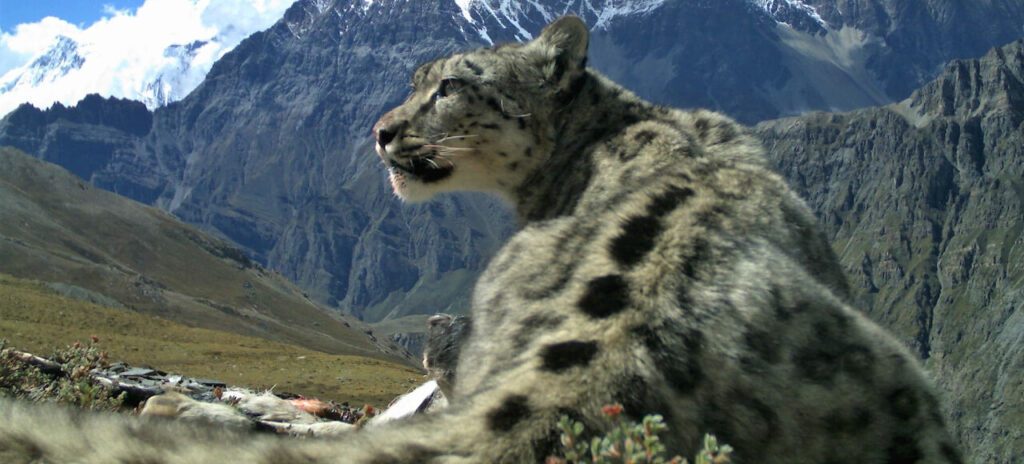
They are well adapted to the cold and rugged terrain, and their thick fur coat helps them stay warm in sub-zero temperatures.
Tibetan wolf:
This is the largest subspecies of gray wolf found in the Himalayas, often called the Himalayan wolf. They are found in the high-altitude areas of Tibet, Nepal, and Bhutan. Their thick fur coat helps them survive in the harsh mountain climate.
Himalayan Griffon:
This majestic bird is often spotted soaring high above the Mustang region. They have a wingspan of up to 2.6 meters and feed on carrion.
Golden Eagle:
The golden eagle is another bird of prey that can be seen during the trek. They are powerful hunters and can take down prey as large as a fox.
More: Upper Mustang Trek in February: Travel Tips, Weather, and More
Pika:
These small, adorable rodents can be seen scurrying around in the rocky terrain. They are an important food source for animals like the snow leopard and Tibetan wolf.
Himalayan Marmot:
These furry creatures can be seen sunbathing on rocks or scurrying into their burrows. They are social animals and live in large colonies.
Yak:
Yaks are domesticated animals that are commonly used as pack animals in the Himalayas.
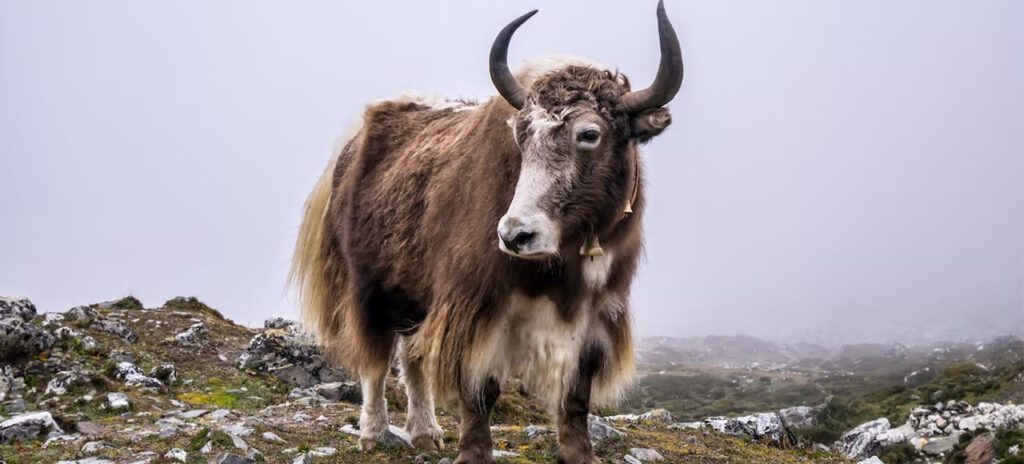
They are well adapted to high altitudes and have a thick fur coat to protect them from the cold.
Himalayan Tahr:
These mountain goats have shaggy coats and can be seen grazing on steep slopes. They are sure-footed climbers and can jump up to 12 feet in a single bound.
Side Treks/Activities
There are several side treks and activities that you can take to explore the area further. Here are some exciting side treks that can be done during the Upper Mustang trek in June:
Visit Lo Manthang:
The ancient walled city of Lo Manthang is the highlight of the Upper Mustang trek.

You can explore the narrow streets, ancient monasteries, and the palace of the former King of Mustang.
Explore the Caves:
Furthermore, the Upper Mustang region is home to several ancient caves, some of which date back to prehistoric times. You can explore the caves and see the ancient paintings and carvings on the walls.
Visit the Monasteries:
In addition, there are several Buddhist monasteries along the Upper Mustang trek that you can visit, including the Ghar Gompa, Tsarang Gompa, and Thubchen Gompa.
Visit the Chosar Caves:
Moreover, the Chosar Caves are a series of ancient caves located near the village of Chosar. You can explore the caves and see the ancient paintings and carvings on the walls.
Explore the Forbidden Kingdom of Mustang:
The Upper Mustang region was once a forbidden kingdom that was closed to outsiders. As a result, the region has a unique culture and heritage that you can explore. You can visit the ancient forts, palaces, and monasteries and learn about the history of the region.
Trek to Muktinath:
Muktinath is a sacred site for both Hindus and Buddhists located in the Mustang region. You can trek to Muktinath from Kagbeni and explore the temple complex and the surrounding area.

Trek to Ghemi:
Ghemi also known as Ghami is a small village located near the Kali Gandaki River. Additionally, it is known for its ancient monasteries, chortens, and beautiful landscapes. You can trek to Ghemi from Charang and explore the village and the surrounding area.
Tips for the Upper Mustang Trek in June
Here are some tips for the Upper Mustang trek in June:
Prepare for the weather:
Although June is a relatively warm month, it is important to bring warm clothes for the evenings and early mornings when temperatures can drop below freezing. Bring layers that you can easily take off or put on as needed and don’t forget to pack a good-quality raincoat in case of unexpected rain.
Stay hydrated:
The Mustang region is a high-altitude desert, and the air is dry. It is important to drink plenty of water to avoid dehydration. Bring a water bottle and consider carrying a water filter or purification tablets so that you can drink water from natural sources along the trek.
Hire a guide or porter:
Hiring a guide or porter can enhance your trekking experience in Upper Mustang. They can provide valuable information about local culture, assist with navigation, and carry your gear so that you can focus on enjoying the trek. Additionally, hiring a guide or porter helps support the local economy.
Pack light:
As you will be trekking for several days, it is important to pack light. Only bring the essentials, such as warm clothing, comfortable hiking boots, a sleeping bag, and toiletries. You can also rent equipment such as trekking poles or sleeping bags in Kathmandu if you don’t want to carry your own.
Let our expert team at Asian Heritage Treks and Travel take care of everything — from guided tours to personalized packing tips and travel arrangements.
Plan My Mustang Trip







